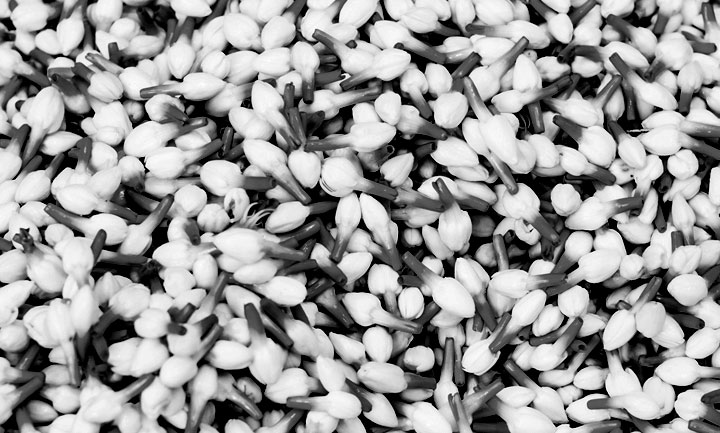The bitter orange tree is one of the most useful for the fragrance industry—every part yields an interesting raw material. The delicate white flowers provide both Orange Blossom and Neroli essential oils, which are among the most popular ingredients in perfumery, decorating the notes of perfume compositions, lending a fresh touch to floral bouquets and forming the bodies of classical colognes.
Orange Blossom and Neroli are both produced from the same fragrant flower with the different methods of extraction determining the texture and olfactory characteristics of the oils. The bitter orange blossoms are hand gathered in late April to Early May when the oil can then be extracted from the blooms.
Orange Blossom oil is extracted using solvents to capture a far richer, thicker more viscous absolute. While Neroli comes from steam distillation of the freshly picked flowers which tends to be lighter in colour and has a more delicate aroma. Orange Blossom is considered a perfumer’s speciality oil as it is rich and potent even in low concentrations and has been admired for centuries for its decadent, exotic and sensual scent. With its aroma being described as warm, floral, rich and jasmine-like it is very popular for use in natural perfumery and beautifully compliments other citrus, floral and wood notes.
It takes at least 1,000 pounds of bitter orange blossom flowers to produce one pound of Neroli oil, making it one of the most expensive among citrus essential oils, however the exotic fragrance has many uses and benefits making it well worth the money. Unlike Orange Blossom, Neroli has a sharper, more delicate aroma with a pleasantly bitter top note and a herbal green body. It was named after the 16th century Princess, Anna Maria de La Tremoille of Nerola, Italy, who loved the fragrant orange blossom scent and introduced it to Italy. Due to its fresh floral aroma and nontoxic substance Neroli oil is a classic element in fragrance design and one of the most commonly used in the industry.
